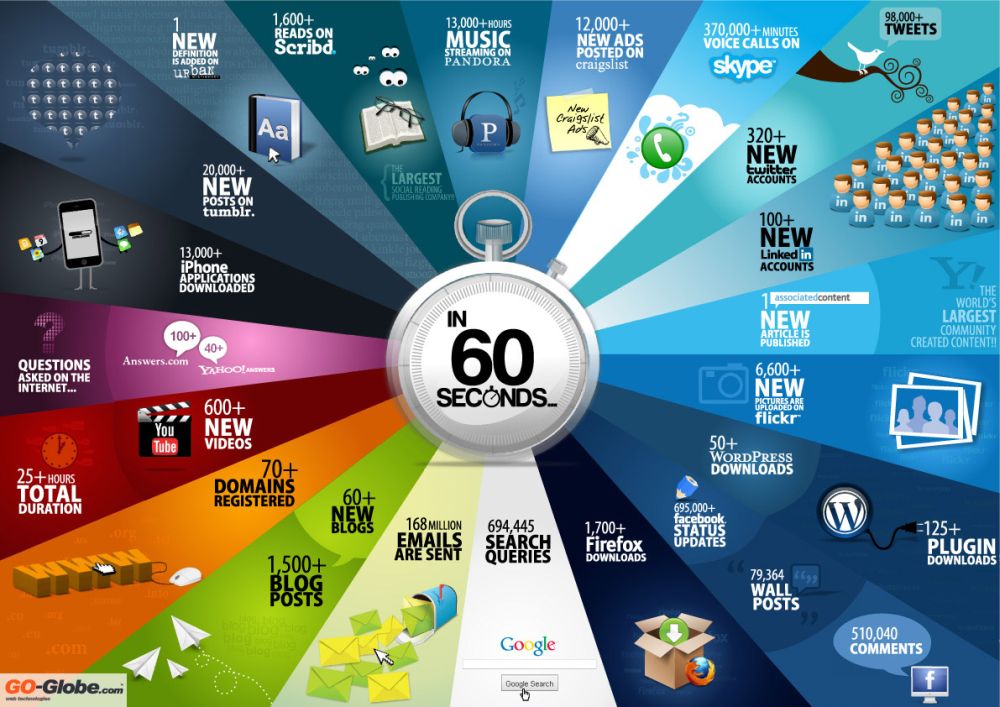The meta-geek blog focuses on geek related topics, geek interests, and geek culture - such as geek identity, technology, fantasy, and science fiction.
Wednesday, June 29, 2011
Sunday, June 19, 2011
Transparent Airbus Airplane of the Future
Airbus showed off their concept airplane that will be efficient and environmentally friendly. By 2050, air travelers can enjoy bio-morphing seats, automated luggage handling, high-tech holographic amenities at your fingertips, acupressure seats, and oh, yeah, a see-through airplane skin.
This goes along well with the airport check-in of the future:
Sources: Airbus 2050 Concept Cabin Has Transparent Skin | Geekosystem
Sources: IATA Checkpoint of the Future (Geekosystem)
What happens in 60 seconds on the Internet?
This infographic illustrates what happen every 60 seconds on the Internet. [Click to enlarge].
Source: 60 Seconds on the Internet [Infographic]
Source: 60 Seconds on the Internet [Infographic]
Saturday, June 4, 2011
UN considers internet access a human right
Internet access is a human right, according to a United Nations report released on Friday.
"Given that the Internet has become an indispensable tool for realizing a range of human rights, combating inequality, and accelerating development and human progress, ensuring universal access to the Internet should be a priority for all states," said the report from Frank La Rue.
This report by the UN is particularly important in view of the recent incidents when governments shut down internet access nationwide during political uprisings in the Middle East.
Read more here: United Nations report: Internet access is a human right - latimes.com
Panasonic wants to build eco-friendly city Fujisawa SST by 2018
Panasonic, along with eight partner companies, have announced plans to construct the Fujisawa Sustainable Smart Town (Fujisawa SST) by 2018 - an eco-friendly city for 1000 residents. Fujisawa SST will combine a number of energy-saving methods: A smart power grid; solar cells and batteries in every home; roads designed for bikes, walkers, and electric vehicles; networked public lighting, and more.
Panasonic Plans Bottom-Up Green City Fujisawa SST in Japan | Geekosystem
Panasonic Plans Bottom-Up Green City Fujisawa SST in Japan | Geekosystem
Goodbye Food Pyramid, Hello Food Plate
The first food pyramid was introduced in 1992 by the USDA, which replaced it now with MyPlate (see below).
Below is the new MyPlate. It shows a plate with the recommended distribution of different nutrients. In my opinion, the plate is much easier to understand than the pyramid as it shows you what your plate should look like. One only wonders if the powerful US dairy industry shoehorned in "Dairy" as being separate from "Protein".
USDA Ditches Food Pyramid for a Food Plate | Geekosystem
Subscribe to:
Posts (Atom)





